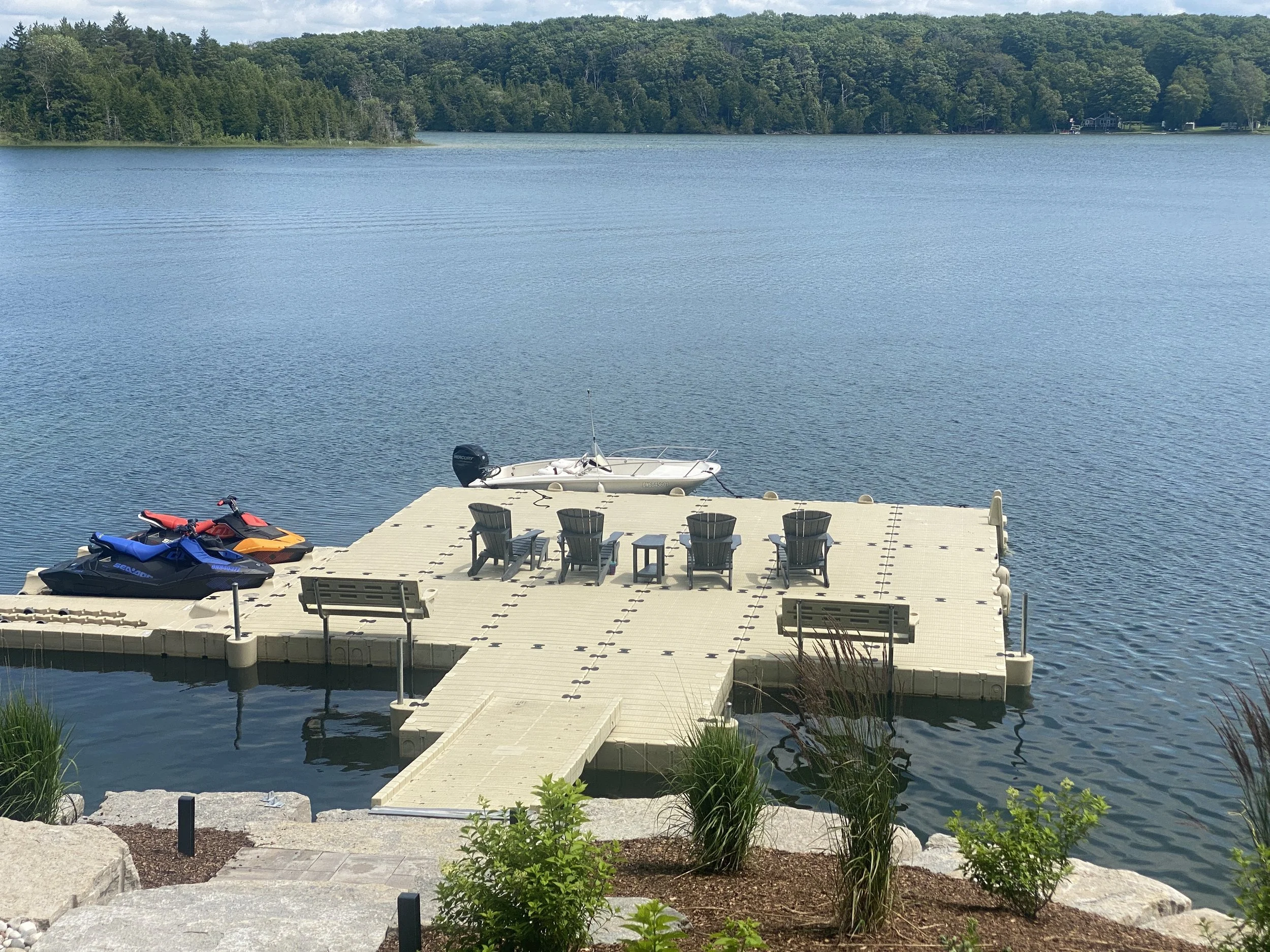
How does an
EZ Dock FLOAT?

V
SURFACE
SUCTION
Water Stance
Is the KEY to
EZ Dock Stability

Traditional floating docks are ‘surface riders’, which means they are susceptible to breaking their connection to the water surface during chop. If this occurs, the platform will rock and sway at the mercy of the water, and the topside will reflect the resultant instability. The suction and wake-muffling design of an EZ Dock works to become a part of the water and proactively reacts to level fluctuation, chop, and wake with unmatched self-levelling stability.

4 Design elements Make A Stable Floating Dock System


EZ Dock sections are capable of floating more weight per square foot than any other floating docks system. Each square foot can support 63 lbs. Each standard EZ Dock section can float 1,000-3,000 lbs.
EZ Dock anchoring systems are crucial to its functional flotation. EZ Dock anchoring options use hinges, arms or pilings that keep it secured to a rigid support while allowing the platform and its individual sections to float freely.

The key component of EZ Dock’s water stance and float technology is its use of gravity and pressure. EZ Docks air chamber design situates the dock only 2 inches beneath the water surface, and 13 inches of free board height above. Hydro-static surface pressure seals the dock in place no matter how the water is moving around it.
EZ Docks and the coupler connectors work in tandem to protect the platform against water shock wave impact. The coupler sets absorb 4,400 lbs of torsion (twisting) pressure and disperse away from the dock. Dispersing this energy maintains a stable top-side equilibrium in any conditions.

EZ Dock is the perfect hybrid platform that combines the rigid stability of a fixed dock with the flexible movement of a floating platform. This combination of function is how EZ Dock mastered it’s industry leading, world renowned float technology.







